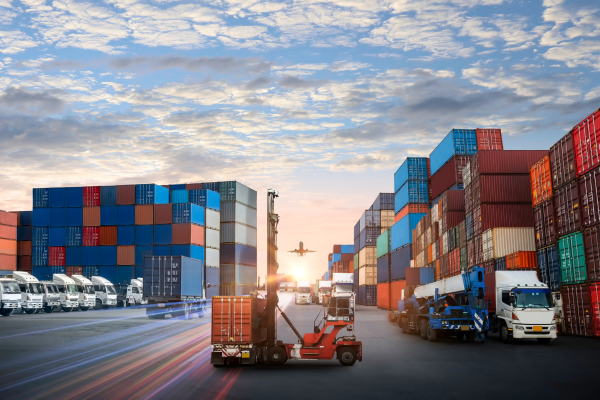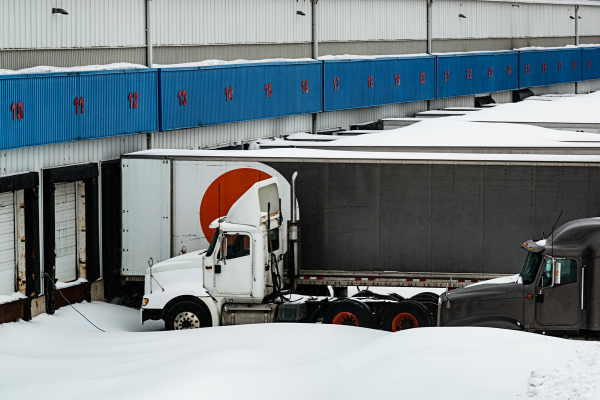Transpacific shipping remains the vital artery of global commerce, connecting North American businesses with Asian, Canadian, and Mexican manufacturing, textiles, and other supplies.
However, this critical trade lane presents unique challenges that can significantly impact your shipping costs, timeline reliability, and ultimately, your bottom line.
As experts in freight management optimization, we’ve identified the top challenges facing businesses engaged in transpacific shipping—and more importantly, the strategic solutions that turn these obstacles into opportunities for competitive advantage.
1. Port Congestion and Delays
The Challenge: Congestion at major West Coast ports like Los Angeles, Long Beach, and Seattle/Tacoma frequently causes days or even weeks of delays, particularly during peak seasons. This congestion cascades throughout the supply chain, affecting inland transportation and warehouse operations.
Our Solution: Our freight management systems employ predictive analytics to anticipate congestion patterns and proactively reroute shipments when necessary. By leveraging alternative ports, we maintain shipping reliability while minimizing delays. Our real-time tracking capabilities allow for immediate contingency planning when congestion inevitably occurs.
2. Volatile Freight Rates
The Challenge: Transpacific shipping rates have experienced unprecedented volatility in recent years, with spot rates fluctuating by 300-400% in a matter of months. This unpredictability makes budgeting and forecasting extremely difficult for importers.
Our Solution: Our strategic approach to rate management includes a blend of contract rates, negotiated FAK (Freight All Kinds) rates, and carefully timed spot market bookings. We leverage our carrier relationships and volume commitments to secure preferential rates, while our advanced analytics enable precise forecasting of rate trends to optimize booking timing for maximum savings. This comprehensive approach to freight management often results in 15-25% cost reductions compared to market averages.
3. Equipment Shortages
The Challenge: Container shortages, particularly for specialized equipment like refrigerated containers, have become increasingly common, leading to booking rejections, rollovers, and shipping delays.
Our Solution: We maintain strategic partnerships with multiple carriers and equipment providers to ensure reliable access to containers even during shortage periods. We forecast equipment needs weeks in advance, securing necessary container types before shortages occur. For clients with consistent volume, we negotiate equipment guarantees as part of our service contracts, ensuring shipping continuity regardless of market conditions.
4. Limited Vessel Capacity
The Challenge: Reduced sailing schedules, blank sailings, and consolidated services have created persistent capacity constraints on transpacific routes, particularly during peak shipping seasons.
Our Solution: Our freight management optimization includes diversified carrier relationships to maximize available options. For high-volume shippers, we secure dedicated space agreements with preferred carriers.
5. Customs and Regulatory Compliance
The Challenge: Navigating the complex web of customs regulations, tariffs, and compliance requirements across multiple jurisdictions creates significant administrative burden and compliance risks.
Our Solution: Our dedicated compliance team maintains current knowledge of all regulatory changes affecting transpacific trade. We provide comprehensive documentation preparation, customs clearance services, and tariff classification support to ensure seamless border crossings. This process prevents costly delays and penalties while accelerating revenue recognition through faster customs clearance.
6. Sustainability and Environmental Regulations
The Challenge: Increasingly stringent environmental regulations, including the IMO 2023 carbon intensity requirements and various regional emission control areas, create both compliance challenges and potential cost increases for transpacific shipping.
Our Solution: We support sustainable shipping practices that not only meet regulatory requirements but also satisfy growing consumer demand for environmentally responsible supply chains.
7. Geopolitical Instability
The Challenge: Trade tensions, regional conflicts, and political instability can suddenly disrupt established transpacific shipping lanes, creating unforeseen delays and compliance issues.
Our Solution: Our comprehensive risk management framework includes constant monitoring of geopolitical developments that could impact shipping operations. We maintain contingency routing plans for all major trade lanes, allowing for rapid adaptation to emerging situations. Our diversified carrier strategy ensures that regional disruptions don’t create catastrophic supply chain failures. This proactive approach to freight management during uncertainty has helped our clients maintain business continuity through numerous geopolitical crises.
8. Last-Mile Delivery Challenges
The Challenge: Even when transpacific ocean shipping goes smoothly, inland transportation and final delivery often present bottlenecks that impact overall lead times and customer satisfaction.
Our Solution: Our end-to-end visibility solution extends beyond port arrival to include drayage, transloading, intermodal transport, and final delivery. We maintain strategic partnerships with reliable drayage providers at key inland destinations. Our integrated approach to freight management ensures smooth handoffs between transportation modes, with automated exception alerts when delays occur.
9. Technological Integration Barriers
The Challenge: Fragmented technology systems across various carriers, ports, customs agencies, and inland transportation providers create visibility gaps and communication challenges throughout the transpacific supply chain.
Our Solution: We’re enabled by a digital platform that serves as the central data hub for your entire transpacific shipping operation. This platform integrates data from carriers, terminals, customs systems, and trucking companies into a single, unified dashboard. The API-driven architecture enables seamless connections with your existing resource plan and inventory management systems, eliminating data silos and providing true end-to-end visibility. This technological integration drives significant efficiency gains through automation of routine tasks and proactive exception management.
10. Shipment Visibility Gaps
The Challenge: Tracking transpacific shipments traditionally involved multiple systems and frequent blind spots, particularly during vessel transit and terminal handling, creating anxiety and unnecessary buffer inventory.
Our Solution: Our advanced tracking system provides real-time location data and predictive ETA updates throughout the entire journey. We utilize a combination of carrier feeds, vessel tracking, and terminal APIs to maintain continuous visibility across all transportation modes. This enhanced visibility enables precision inventory planning, reduced safety stock requirements, and proactive customer communications about incoming shipments, ultimately increasing your working capital efficiency and improving customer satisfaction.
Transform Your Transpacific Shipping Strategy
The challenges of transpacific shipping are significant, but they’re not insurmountable with the right freight management partner. Our comprehensive approach combines strategic carrier relationships, advanced technology, proactive planning, and continuous optimization to transform these challenges into opportunities for competitive advantage.
By implementing our proven solutions for transpacific shipping optimization, our clients typically experience:
- 15-22% reduction in overall shipping costs[1]
- 37% improvement in on-time delivery performance[2]
- 42% decrease in customs-related delays[3]
- 28% reduction in safety stock requirements through enhanced reliability[4]
Contact our freight management specialists today to discover how we can help you navigate the complexities of transpacific shipping and turn logistics challenges into revenue-generating advantages for your business.
References:
[1] Armstrong & Associates, “3PL Market Analysis: Cost Savings Through Optimization,” 2023. [2] Hackett Group, “Supply Chain Performance Benchmarking Report,” 2024. [3] Journal of Commerce, “Customs Clearance Efficiency Analysis,” 2023. [4] Supply Chain Management Review, “Inventory Optimization in Global Supply Chains,” 2024.





